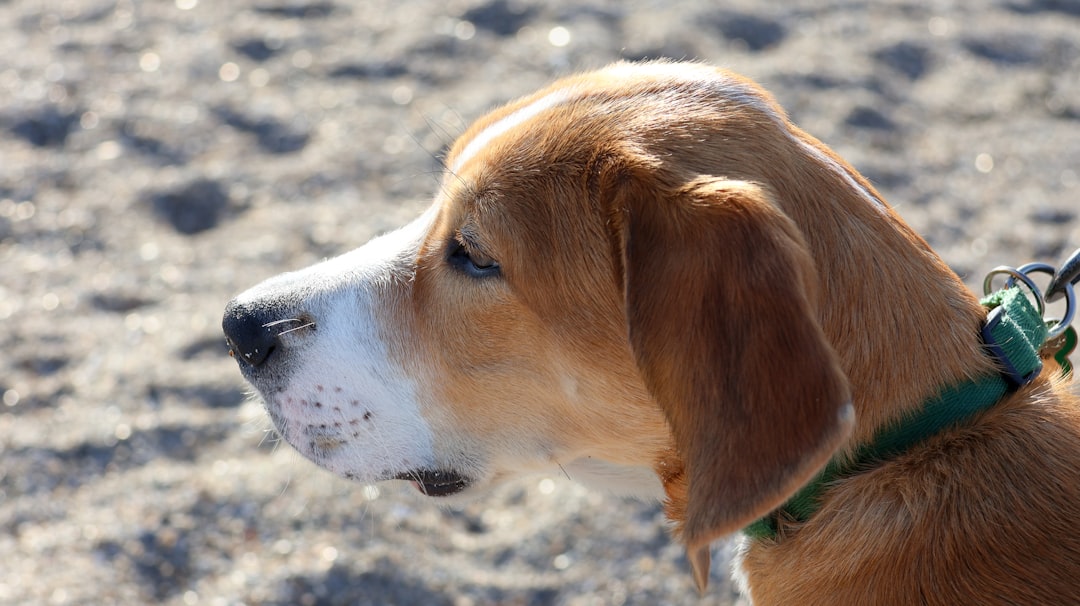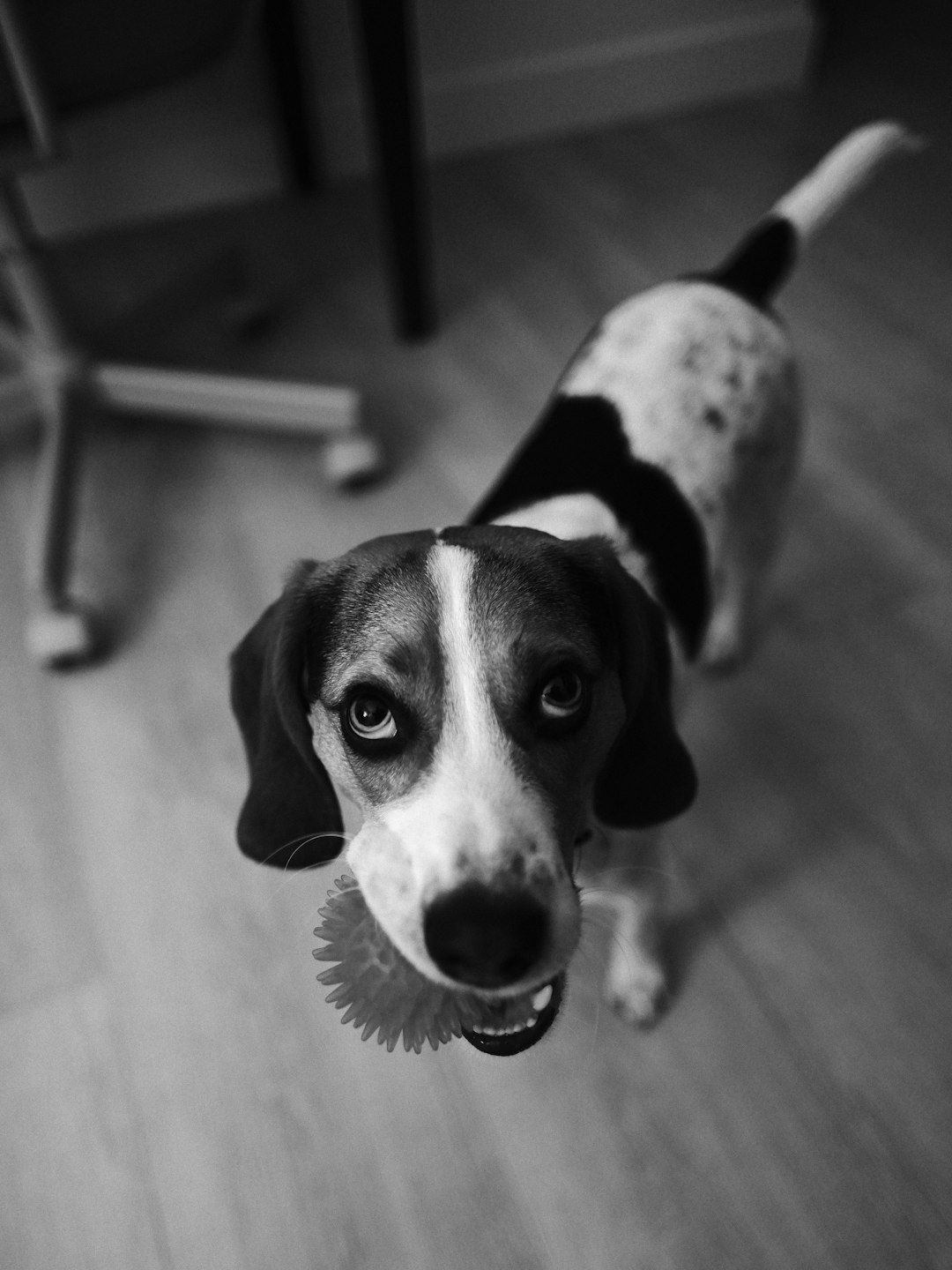Picture this: a furry superhero ready to save the day. That’s your service dog, even if they sometimes look more like an adorable loaf of bread than a caped crusader! Training these canine companions might feel as daunting as teaching a cat to fetch, but fear not. With a sprinkle of patience and a dash of humor, you’ll turn your pooch into a well-behaved hero. So let’s dive into the best practices for service dog training, and unlock the secret to a wag-worthy partnership!
Understanding the Role of Service Dogs

When it comes to service dogs, these pooches are not just cute, furry companions—they’re superheroes in fur coats! 🦸♂️ Here’s what you need to know:
- Assist and Support: Service dogs help individuals with disabilities gain independence. From guiding the visually impaired to alerting those with hearing impairments, these dogs wear their capes proudly (even if it’s invisible).
- Training is Key: A service dog goes through rigorous training. They aren’t your run-of-the-mill paw-some pals; they’re specially trained to perform tasks that directly mitigate their handler’s disabilities.
- Public Access: Unlike regular dogs, service dogs have the legal right to accompany their handlers everywhere! Yes, that means the grocery store, the airport, and even the ice cream parlor (though they might just want a taste).
- Emotional Support: Many service dogs also provide emotional support, helping their handlers navigate the rollercoaster of life, anxiety, or depression.
Clearly, service dogs are fantastic companions that make a real difference, proving that the Bond between a human and their service dog is a true “paw-some” partnership! 🐾
Choosing the Right Breed for Service Work

Picking the perfect pooch for service work is like matchmaking, but with way more fur and fewer awkward silences. Not every dog is cut out to be a service dog; they have to possess certain traits that make them the superhero of the canine world. So, what should you look for? Here’s a handy guide:
Ideal Traits for a Service Dog:
- Temperament: Calm and friendly, never the social butterfly type barking at every squirrel.
- Trainability: Smart cookies who can learn commands faster than we can say “good boy!”
- Size: Medium to large breeds often excel (sorry, Chihuahua lovers).
- Health: No medical issues, because those heroic efforts shouldn’t come with a vet bill!
Some Popular Breeds for Service Work:
| Breed | Temperament | Trainability |
|---|---|---|
| Labs | Friendly, calm | High |
| Golden Retrievers | Loyal, gentle | High |
| German Shepherds | Intelligent, protective | High |
| Poodles | Smart, energetic | High |
| Boxer | Fun-loving, alert | Moderate to High |
Ultimately, your service dog should match your lifestyle and needs. Remember, you want a partner who’s best suited for the job, not just a cuddle buddy! 🐾
Basic Training Techniques for Service Dogs

Training a service dog isn’t just about making them look cute in vests—although, let’s be honest, they definitely win in that area! It’s all about building a trustworthy and reliable furry companion. Here are some basic training techniques that bring out the best in your service dog:
- Start with the Basics: Teach commands like sit, stay, and come. These are like the ABCs of dog training. Once they master those, everything else feels like a walk in the dog park!
- Positive Reinforcement: Who doesn’t love treats? Reward your service dog with goodies or praise when they follow commands. It’s the canine equivalent of getting a cookie for doing your homework (just don’t give them too many—no one likes a chubby service dog).
- Consistency is Key: Use the same commands and hand signals every time. Imagine if your boss changed your job description daily—confusing, right? Keep it simple for your service dog!
- Practice Makes Paws-itive: Regular training sessions help reinforce skills. Aim for short sessions sprinkled throughout the day, preventing boredom and burnout.
Remember, patience and practice make perfect! Your loyal service dog will thank you with an endless supply of slobbery kisses.
Socialization Skills for Service Dogs
When it comes to socialization skills, every service dog must be the life of the party! Seriously, well-socialized service dogs don’t just excel in their tasks but also shine in everyday life. So, let’s sprinkle some fun on this topic!
Here’s how to ensure your service dog becomes the social butterfly of the canine world:
- Expose Early: Introduce your service dog to various environments, people, and other pets from an early age. Think bustling cafes, farmers’ markets, or that eccentric Uncle Larry. The more experiences, the better!
- Playdates: Organize playdates with other dogs. It’s a great way for your service dog to learn boundaries and appropriate behavior. Just remember: No one likes a show-off, even if your service dog can catch a frisbee 10 feet in the air.
- Café Confidence: Take your service dog to pet-friendly cafés. Let them observe bustling scenes without getting overwhelmed. You’d be surprised at how quickly they can learn to ignore the “mean” barista!
In summary, socialization enables your service dog to handle various situations with confidence, making them reliable and effective in their service duties. And hey, a well-socialized service dog makes for a happier pup—and isn’t that the real goal? 😊
Advanced Commands and Task Training
When it comes to training your service dog, it’s not just about mastering sit and stay. Oh no, my friend—it’s a whole new ball game with advanced commands and specialized task training! Imagine your service dog being able to retrieve your keys, bring you the remote, or even perform a professional-level “howl at the moon” serenade (okay, maybe not the last one).
Here’s a fun checklist for advanced training:
- Focus on Purpose: Determine what specific tasks your service dog needs to perform based on your personal needs. Whether it’s guiding you, alerting you to sounds, or helping you with mobility, clarity is key!
- Use Positive Reinforcement: Every time your service dog nails a command, shower them with treats and praise. Yes, they work for food—much like humans during Monday morning meetings.
- Practice Consistently: Just like that annoying workout routine we often avoid, consistency is vital. Daily skills sessions keep your service dog sharp and ready to roll!
Popular Advanced Commands
| Command | Purpose |
|---|---|
| Fetch | Retrieve items, like dropped pills or a phone. |
| Turn | Help with mobility and navigation. |
| Brace | Provide stability when standing up. |
Remember, training your service dog is a journey, not a race. So grab a treat, kick back, and let the learning (and bonding) begin! 🐾
The Importance of Consistency and Routine
When it comes to training your service dog, consistency is key – yes, even more than your morning coffee (and that’s saying something!). Here’s why establishing a routine can change the game:
- Predictability: Dogs thrive on predictability. They can follow a schedule better than a grandma with a bingo plan.
- Reinforced Learning: Regular practice of commands helps them remember their “magic tricks” faster. Think of it as revising for a doggy exam.
- Stress Reduction: A consistent routine reduces anxiety – not just for your pup but for you too! Who needs a therapy session when you have a service dog that knows when it’s snack time?
A Quick Routine Table
| Time of Day | Activity |
|---|---|
| Morning | Walk & basic obedience |
| Afternoon | Skill training session |
| Evening | Socialization outing |
| Night | Wind down & cuddle time |
So grab that calendar and start planning! Remember, your service dog doesn’t just need a routine; they thrive on it! And who knows? You might end up with a four-legged superstar!
Building a Strong Bond Between Handler and Dog
Ah, the magical union of human and service dog! Think of it as a buddy cop movie—except it’s just you and your furry partner, saving the world one task at a time (or just enjoying a leisurely stroll, which is equally heroic). To ensure that your service dog is not just a sidekick but a superhero in training, building a solid bond is imperative.
Here are some paws-itively effective tips:
- Consistency is Key: Just like a good Netflix series, make sure that every episode (or training session) follows a clear plot! Repetition helps your service dog learn and trust you.
- Positive Reinforcement: Treats, praise, and belly rubs are like confetti for dogs. They make your service dog feel appreciated and reinforce good behavior.
- Quality Time: Engage in fun activities together, be it throwing a ball or simply curling up on the couch. Happy quality time boosts your bond!
- Communicate!: Yup, talking to your service dog isn’t crazy—it’s essential! Use a mix of verbal commands and hand signals. Dogs are like attentive toddlers; they thrive on communication.
In the end, building a bond with your service dog isn’t just about training—it’s about friendship. So, grab that leash and embark on this exciting adventure together! Your service dog will thank you with wagging tails and happy barks!
Resources for Ongoing Support and Training
So, you’ve got your service dog in training and you’re feeling like a superstar dog trainer, right? Well, fear not! Even the best of us sometimes need a little help. Luckily, the world is full of resources ready to fetch us some knowledge!
Here’s a list of paw-some resources for ongoing support and training:
- Books: Check out some pet-astic reads like “The Art of Raising a Service Dog” or “Dog Training for Dummies” (yes, they’re quite handy).
- Online Courses: Platforms like Udemy or Coursera have courses specifically for service dog training. Who wouldn’t want to learn virtually while wearing pajamas?
- Support Groups: Join local or online communities. You can share tips, tricks, and probably some “tail” of frustration from your training journeys!
- Veterinarian Recommendations: Your vet is a treasure trove of information about behavioral specialists who can offer a paw or two.
Remember, training a service dog isn’t a sprint; it’s a marathon—with occasional pit stops for belly rubs. Keeping up with your resources ensures that both you and your service dog maintain that rock-solid bond and rockstar skills! 🐾
Frequently Asked Questions
What types of tasks can service dogs be trained to perform?
Service dogs can be trained to do a wide variety of tasks that make life easier for their human companions—think of them as furry Swiss Army knives that make you feel like a superhero! These tasks can include retrieving items (like your remote control during a gripping series finale), guiding a person with visual impairments (because sometimes eyesight is overrated), alerting their humans about sounds (i.e., barking at your doorbell because clearly, it’s not supposed to be there), and providing physical support in case someone decides to test gravity and takes a tumble! So, if you can dream it, chances are there’s a dedicated pooch out there ready to help you achieve it!
What is the best age to start training a service dog?
You know what they say, ‘the sooner, the better!’ Typically, training for service dogs starts between 6 months to 1 year of age, because at that age, they’re like sponges waiting to soak up all the epic life lessons you throw at them. However, don’t fret if you have a delightful canine over one year—this is not a ’one-and-done’ deal; dogs of any age can learn new tricks! Just remember, every pup is different: some might act like an earnest student, while others may resemble that kid who throws paper airplanes during math class. Keep it fun, keep it focused, and prepare for some doggone success!
How long does it take to train a service dog?
Ah, the golden question! Training a service dog is not a microwave meal; it’s more like a slow-cooked stew—you’ll want to let it simmer to ensure everything is just right! On average, the training process can take anywhere from 6 months to 2 years, depending on the complexity of tasks they’re learning and your dog’s knack for mastering them. Some dogs are incredibly quick learners, leaving their humans in awe, while others may need more time to reflect upon life and their purpose (and maybe contemplate their next nap). Regardless, patience is key—after all, good things come to those who wait, especially when a furry friend is involved!
Can any dog be trained as a service dog?
Ah, the age-old debate—can my tiny Pomeranian, who thinks barking at his own shadow is a noble pastime, be a service dog? While it’s heartwarming to imagine all dogs as potential service hounds, the truth is that not every pooch has what it takes to be a service dog. Ideal candidates are typically large enough to assist with physical support, possess strong temperament, social skills, and focus on tasks without getting too distracted by squirrels! Breeds like Labradors and Golden Retrievers swear by service work, while others, like the overly excited Chihuahua, might be better suited for a wildly entertaining role as a lap dog. So, it’s crucial to assess your dog’s temperament and behavior before donning that service cape!



